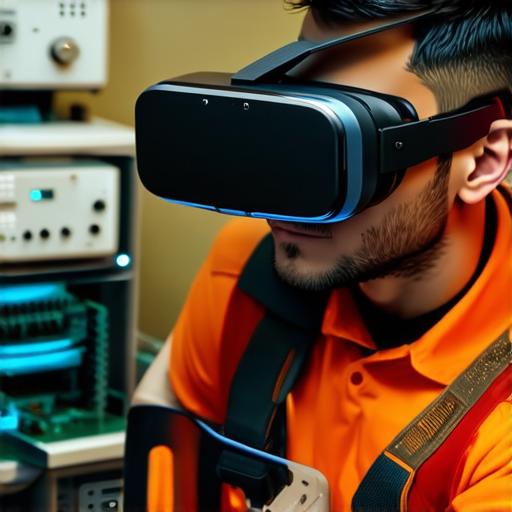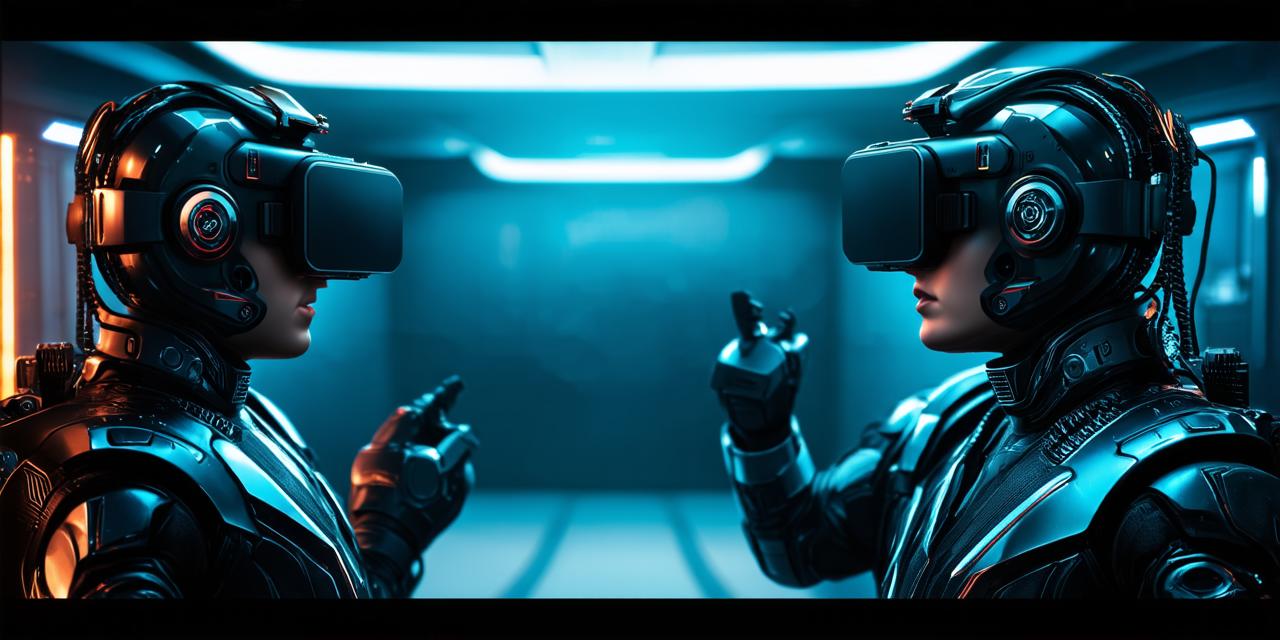The Early Years: Pioneers in Virtual Reality
In the early days of VR, pioneers such as Ivan Sutherland, Jaron Lanier, and Michael Noll laid the foundation for this emerging technology. Sutherland’s Sketchpad (1963) was one of the first computer graphics programs to allow users to create and manipulate 3D objects on screen. However, it was not until 1968 that Sutherland created his most famous work, “Swordfight,” which allowed two users to battle each other in a virtual arena using gloves equipped with sensors.
Lanier, who later coined the term “virtual reality,” developed the first VR headset in 1973, called the “Telematic Art.” This bulky device used mirrors and projectors to create an immersive visual experience. In 1980, Lanier developed the first interactive VR system, which allowed users to explore a virtual world using handheld controllers.
Noll’s work in the field of computer graphics also paved the way for VR technology. He developed the first VR headset in 1982, called the “Fulldome,” which projected images onto a hemisphere to create a sense of depth and immersion.
The 1990s: The Rise of Virtual Reality Gaming
As technology advanced, VR began to gain traction in the gaming industry. In 1992, Sega released the first VR console, called the “Sega Genesis.” Despite its limited success, the console laid the groundwork for future VR gaming systems.
In 1994, Sony launched its own VR system, called the “PlayStation X,” which used a head-mounted display (HMD) to create a more immersive experience. However, the system was not widely adopted and was eventually discontinued.

The turn of the millennium saw the release of several VR gaming systems, including the PlayStation 2, Xbox, and Nintendo GameCube. These consoles incorporated VR technology into their designs, allowing users to experience games in a more immersive way.
The Emergence of Virtual Reality Applications beyond Gaming
While VR technology was initially developed for gaming, it quickly began to expand into other areas such as education, medicine, and architecture. In 1997, the first educational VR system, called “Virtual Field Trips,” was launched, allowing students to explore historical sites and natural wonders from the comfort of their classrooms.
In 2000, the first surgical VR system, called “VR Surgical System,” was developed, allowing surgeons to practice complex procedures in a simulated environment. This technology has since been used in numerous medical applications, including training doctors and nurses, performing surgeries, and rehabilitating patients.
Virtual reality technology has also revolutionized the field of architecture. In 2003, Autodesk launched “Autodesk Virtual Architect,” a VR system that allowed architects to design and visualize buildings in a virtual environment. This technology has since become widely used in the industry, allowing architects to create more immersive designs and test them before they are built.
The 2010s: The Dawn of Consumer Virtual Reality
The 2010s saw the launch of several consumer VR systems that brought virtual reality technology into the mainstream. In 2012, Samsung released the first smartphone-powered VR headset, called the “Gear VR,” which allowed users to experience virtual reality on their existing devices.
In 2016, Oculus launched its flagship VR system, called the “Oculus Rift,” which used a high-resolution display and advanced tracking technology to create a more immersive experience. The launch of the Oculus Rift was followed by the release of several other consumer VR systems, including the HTC Vive, PlayStation VR, and Samsung Gear VR 2.
The Impact of Virtual Reality on Society
Virtual reality technology has had a significant impact on society, both in terms of entertainment and practical applications. It has allowed people to experience immersive environments and interact with digital objects in ways that were previously not possible.
In the gaming industry, VR technology has created new levels of immersion and engagement, allowing players to feel like they are truly a part of the game world. This has led to the development of new games and experiences that take advantage of VR’s unique capabilities.
Virtual reality technology has also had practical applications in fields such as education, medicine, and architecture. It has allowed people to learn and experience new things in ways that were previously not possible, leading to improved outcomes and increased efficiency.
The Future of Virtual Reality Technology
As virtual reality technology continues to evolve and advance, it is likely to have an even greater impact on society in the coming years. Some potential developments include:
- Advancements in haptic technology that allow users to feel physical sensations in virtual environments
- Integration of VR technology into everyday devices such as smartphones and laptops, making it more accessible and convenient for users
- The development of new applications in fields such as tourism, real estate, and entertainment
- Continued advancements in display resolution and tracking technology that create even more immersive experiences.
Summary
The origins of virtual reality technology can be traced back to the 1960s, with significant advancements and developments over the years. From its roots in gaming to its applications in education, medicine, and architecture, VR technology has had a profound impact on society. As the technology continues to evolve and advance, it is likely to have an even greater impact on our lives in the coming years. Whether you are a gamer or a professional in another field, virtual reality technology has something for everyone.
